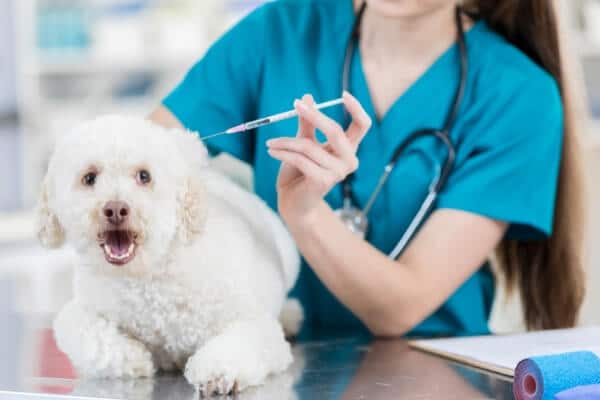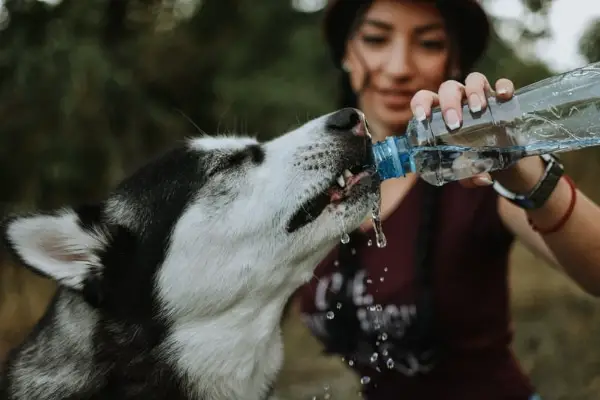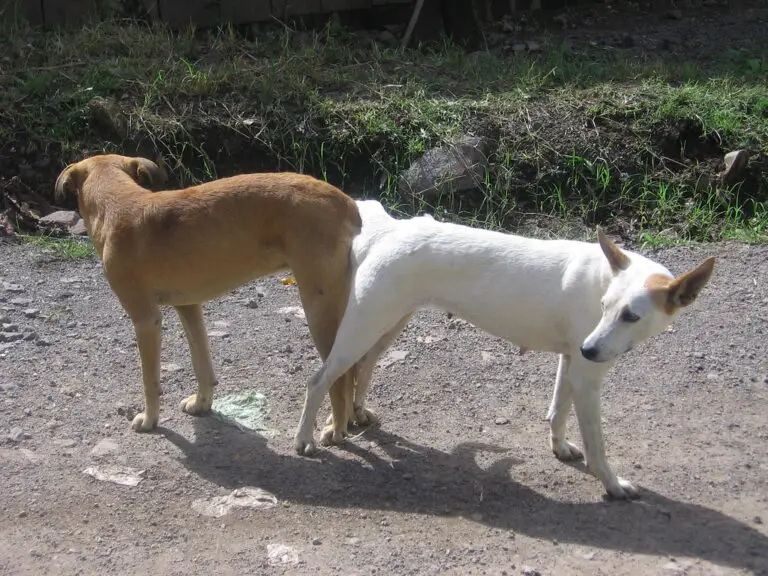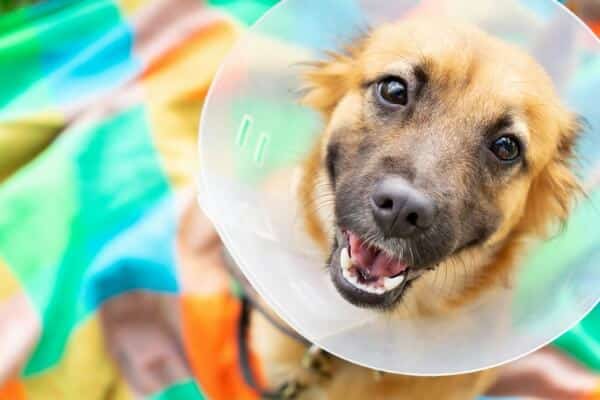Do Dogs With Rabies Drink Water Or Eat? (Explained With FAQs)
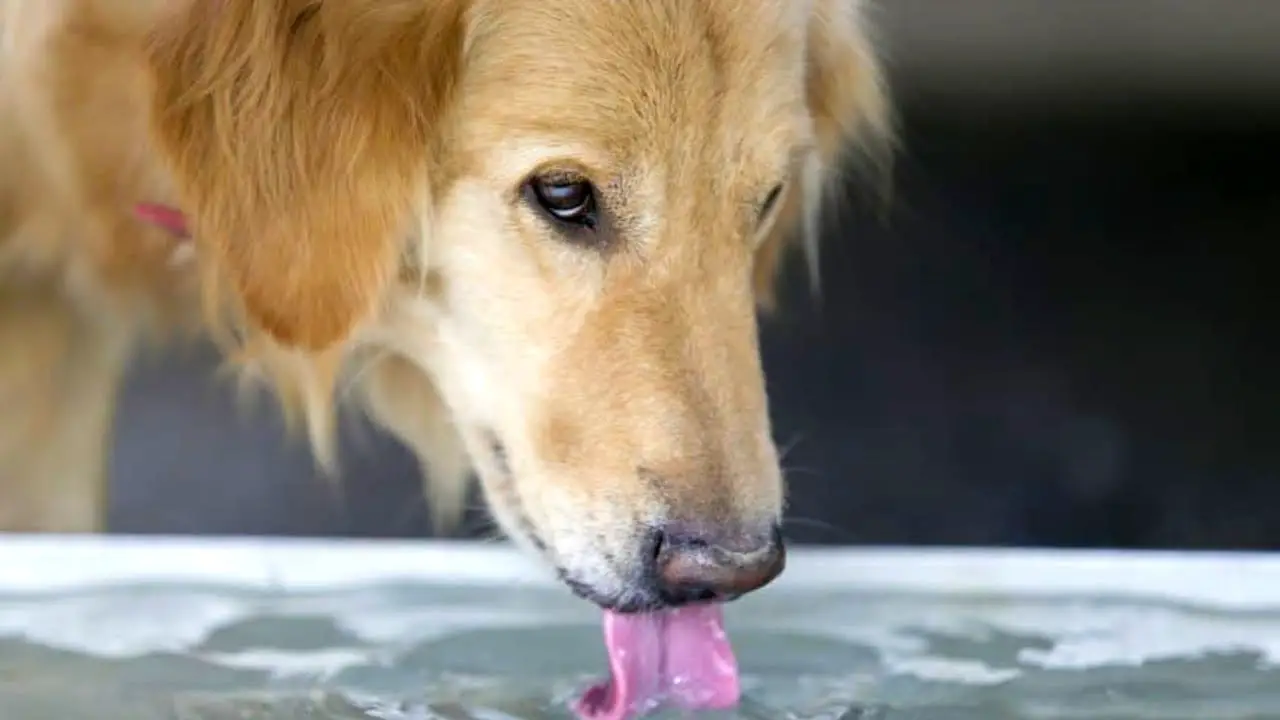
As a highly fatal dog infection, it’s important to understand the various symptoms associated with rabies in order to provide adequate care for an infected dog. We can all agree that loss of appetite and decreased desire to drink are common symptoms associated with various health conditions in dogs. How true is that for rabies? Well, it’s better to get a glimpse of how this all comes together.
In the advanced stages of rabies, the virus invades dogs’ central nervous systems, destroying their neural tissues. This causes muscles of the dog’s jaw and throat to become paralyzed leading to dysphagia (difficulty in swallowing). Hence, the reason why infected dogs turn down water or food.
Dogs suspected to have rabies are either euthanized or quarantined for an observation period of 10 days to determine whether or not they are infected. During this period, they are provided with food but cannot be force feed like in the case of parvo. Hence, if paralysis occurs in an infected dog, they will be no way to feed them.
However, the major cause of concern is the invasion and destruction of the dog’s nervous system by the virus which often leads to death.
There are different forms of rabies in dogs and they have different symptoms. Knowing how to identify rabies in dogs, how to handle a rabid dog, and how to protect your dog against rabies is necessary. So, let’s get started and learn everything about rabies in dogs!
Read Also: Do Dogs With Rabies Die After Biting Someone? (Truth Revealed!)
Jump to Section
Do Dogs With Rabies Drink Water?
Rabies is a virus affecting mammals. It is a fatal viral disease that affects the central nervous system. Dogs are susceptible to rabies.
You might have heard the name “Hydrophobia” used for rabies. That’s why people think that dogs can’t drink water when they have rabies. However, hydrophobia occurs in humans and not dogs.
However, rabies can progress to cause paralysis in dogs’ swallowing muscles. Drooling (excessive salivation) is also a common symptom of rabies in dogs. Moreover, infected dogs can become dehydrated when they don’t drink. Regardless of that, virtually all rabies fatalities in dogs are due to CNS damage.
Do Dogs With Rabies Eat?
Dogs with rabies may experience decreased appetite but when paralysis kicks in they may be unable to eat or swallow anything.
At first, rabid dogs become furious, highly active, and excited. They start showing signs of voracious appetite and may chew on anything such as stones, dirt, and other non-edible food items. But all this only lasts as long as their jaw and throat muscles are intact.
Paralysis often occurs in 2 to 4 days after infection. After paralysis occurs in rabid dogs, they experience difficulty swallowing and are unable to eat food let alone non-edible food items. Rabies is a life-threatening virus that spreads rapidly. Its symptoms become only worsen with time.
There are 2 classic forms of rabies namely; furious rabies and dumb (paralytic) rabies. They are explained in more detail later in the article.
Symptoms of Rabies In Dogs
In advanced rabies, the virus attacks a dog’s nervous system, causing jaw and throat paralysis. This makes swallowing difficult, so infected dogs often refuse food and water. Rabies spreads from one animal to another through saliva, biting, or blood transmission. It eventually leads to death in animals.
Rabies has both specific and non-specific symptoms. But it starts with non-specific symptoms due to which it can be hard to identify rabies in the early stage.
The non-specific symptoms of rabies in dogs include:
- Vomiting
- Fever
- Anorexia
- Lethargy
- Weakness
In the first phase of rabies, the dogs experience behavioral changes. An active dog may become lethargic while a shy dog may become hyperactive and aggressive. It lasts for about 2-3 days.
The symptoms worsen and the dog either gets “Furious Rabies” or “Dumb Rabies”. Dumb rabies is a lot more common in dogs.
Furious Rabies
In furious rabies, the dogs become ferocious, and highly excitable, and start eating non-edible food items (Pica) such as stones, dirt, rubbish, etc.
The dogs end up having paralysis in furious rabies. In the end stage, the dog dies of violent seizures.
Dumb Rabies
In dumb rabies, the jaw muscles and throat of dogs become paralyzed. Paralysis also sets in the limbs of dogs and the dog is unable to move, eat, drink, etc.
Excess saliva production is another symptom. The dog’s lower jaw drops and its face distorts.
What To Do If You Suspect That Your Dog Is Infected With Rabies?
Rabies has no treatment for unvaccinated dogs. It spreads to other animals and humans too in no time.
Therefore, you should take care of a rabid dog in the proper way. Here are a few things to do when you find out your dog has rabies!
Quickly Move Your Pooch To A Separate Area
As a rabid dog is dangerous for everyone around it, the dog should be kept in isolation. Place your dog in a separate area so that it can’t bite another human or animal. Rabies spreads from biting and saliva therefore you should come in contact with a rabid dog’s saliva.
Consult Your Vet
You have to call your veterinarian and animal control authorities so that they can examine the condition of your rabid dog. Coming up with a 100% accurate diagnosis for rabies requires a biopsy test which takes a lot of time. It is possible that the dog might die before the biopsy results are ready.
Protecting the public and other animals from rabies is crucial. As rabies has no cure, the authorities might command the vet to quarantine your dog for 10 days or to resort to euthanasia in more serious cases.
If your dog is still alive and didn’t show any symptoms of rabies after a 10-day observation period, that proves that your dog has not been infected and there is no risk of infection from any bit before the quarantine. Going forward, effective preventive measures such as the administration of an anti-rabies vaccine are strongly recommended to reduce the chances of infection with rabies.
Handle Fido With Caution
Handling the dog with caution is important so that you don’t get rabies yourself. Keep it in a separate place and follow all the advice given by your vet. Don’t let any other human or animal come close to your rabid dog.
Keep the dog in a crate while taking it to the vet because rabid dogs become aggressive and hard to handle. This will ensure that the dog doesn’t bite anyone on the way to the vet.
Use Disinfectants
Common disinfectants and detergents can kill the rabies virus. You should keep your dog clean and give it regular baths. Clean your house with bleaching agents so any virus or bacteria can stay away from you and your pets.
If a wild animal bites your dog, clean the wound with soap and water. Disinfectants reduce the chances of contracting rabies in dogs as it kills the virus.
You should immediately wash the wound and the area around it. It is the number one prevention technique for rabies.
Regular Anti-Rabies Shots For Prevention
Vaccinating your dog isn’t only crucial for its health but is also required by law. Giving regular anti-rabies vaccination to your dogs will keep them safe and healthy.
Rabies is an invasive virus that leads is nearly 100% fatal. It isn’t only harmful to the infected dog but also to the people and other animals around it.
Rabies vaccination and revaccination are important practices to prevent rabies in dogs and other animals. A booster is given 1 year after vaccination, followed by subsequent vaccinations administered after every 3 years.
FAQs
Q.1. Can Dogs Get Rabies From Drinking Water?
Dogs can get rabies from drinking water if another animal with rabies drinks from the same source. That water can have the saliva of the rabid dog which can spread to the healthy dog. However, the chances of getting rabies from drinking water are extremely low. It’s because rabies won’t survive in water for too long.
Q.2. How Long Can A Dog With Rabies Live?
Once a rabid dog starts showing symptoms of rabies, it only lives for about 3-10 days. As soon as the rabies virus starts affecting the brain, it multiplies rapidly and destroys the entire central nervous system. The dog starts having paralysis and seizures. All this eventually leads to the death of the rabid dog.
Q.3. How To Tell If Your Dog Has Rabies?
The early signs of rabies in dogs are hard to identify as they are similar to many less dangerous diseases. However, look for signs like:
- Fever
- Lethargy
- Changed Behavior
- Excess Saliva
- Frothy or Foamy Saliva
- Not Eating or Drinking As Usual
- Different Sounds while Barking
- Aggression
- Unmanageable Behavior
- High Excitability
Q.4. Do All Dogs Have Rabies?
Rabies is a common disease in dogs and other mammals. But all dogs don’t have rabies neither are dogs born with this infection. Rabies spreads from biting and saliva. It is a fatal disease so rabid dogs don’t survive for a long time. Dogs can spread rabies to other animals and humans even before showing the obvious symptoms of rabies. Therefore, you should stay cautious around dogs you aren’t aware of.
Final Thoughts
Now you know why rabid dogs might not drink or eat and how to prevent your dogs from catching rabies, you can keep your dog healthy. Vaccinating dogs against rabies is crucial as the disease can’t be cured.
Once a dog develops rabies, it will eventually die. Seeing a dog die from a disease like rabies that causes symptoms such as paralysis and seizures is painful. So, take all the preventive measures to keep your dog safe and sound.
You should protect yourself from rabies too as it is equally fatal for humans. Stay away from dogs you don’t know, keep your dog away from stray dogs to prevent biting and saliva contraction, and disinfect your dog frequently.
Related Articles
Read related posts about

